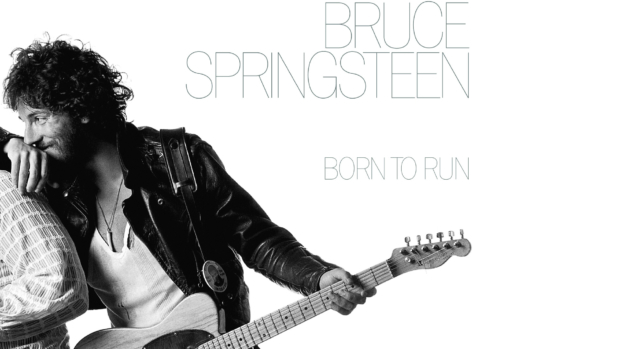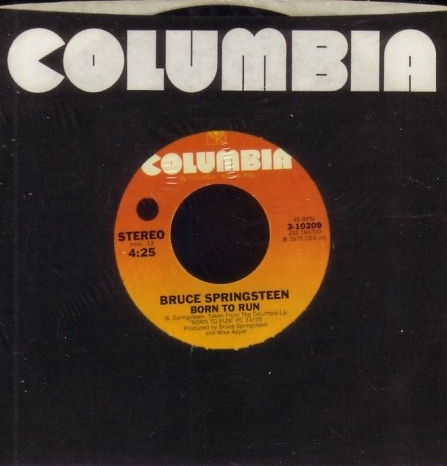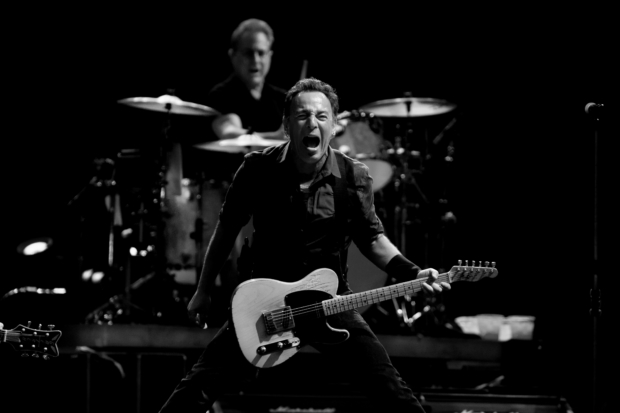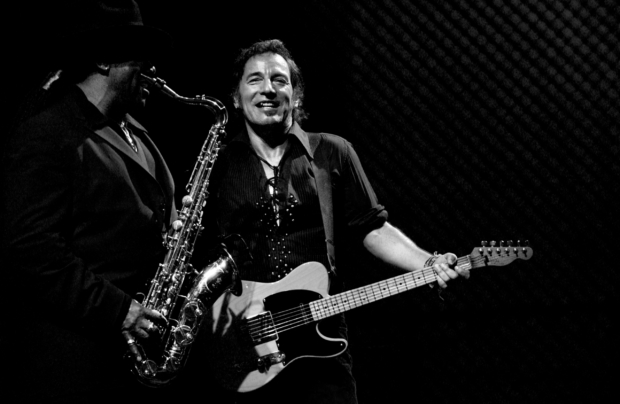Becoming The Boss: Bruce Springsteen’s “Born to Run”
Pre-Born to Run: 1973-1974
Given his popularity for the last four-plus decades, it’s strange to think of a time when Bruce Springsteen wasn’t The Boss.
But rewind back to 1974, and this was just the case.
He had just released two albums (Greetings from Asbury Park, N.J. and The Wild, the Innocent & the E Street Shuffle) that had underperformed commercially, and his label, Columbia Records, were losing confidence.
The third one would be make-or-break: he needed to deliver, and in a big way.
But, before he could get to work, there was a hurdle to get over first.
As a way of testing the waters, Columbia decided that they’d only fund a single, not an album. Get on the radio, and they’d put up for the new record. If not, Bruce was on the first Greyhound bus back to New Jersey.
Good thing, so, that the song he came up with was “Born to Run”.
The career-saving anthem didn’t come quickly – recording sessions dragged on for six months – but when the dust settled, Springsteen would have his first big hit, and, crucially, a label that was now on-board.
Next up was the album of the same name.
Line-up Changes and Recording Problems
Things got off to a rocky start when keyboardist David Sancious, and drummer Ernest “Boom” Carter, decided to leave the E-Street Band.
Both excellent musicians whose playing was central to “Born to Run”‘s frenzied sound, it was an unwelcome and untimely blow.
The search for replacements wasn’t without its difficulties, as Springsteen memorably described in his 2016 memoir:
Eventually, Max Weinberg and Roy Bittan, two veterans of the Broadway circuit, joined on drums and keyboard.
As replacements go, he couldn’t have chosen better. They’d bring a solidity and finesse to the music, and become longstanding members (both are still in the band to this day).
Bruce and the E-Street gang then decamped to The Record Plant to get to work.
The sessions were, understandably given the circumstances, long, stressful and intense.
Springsteen, despite labouring over every individual note and tempo change, was chronically dissatisfied and, as time went on, some started to question if the album would ever get completed.
But fast-approaching tour dates would force his hand. Scheduled to coincide with the album’s release, they provided a much-needed deadline: now, for better or worse, he needed to finish the job.
So, a few frantic studio sessions later, he decided to cut (what he thought were) his losses; Born to Run was released, at last, on August 25th, 1975.
The Album Drops

He needn’t have been so worried.
Born to Run quickly became a monster hit and would, in time, become recognised as one of the best rock albums of all time.
“Thunder Road” kicks it all off. Following a gentle intro of piano and harmonica, Bruce enters with one of his most iconic verses:
Screen door slams
Mary’s dress waves
Like a vision she dances across the porch
As the radio plays
The song gradually builds in intensity, until a Clarence Clemons’ sax solo, played over a deep half-time feel, brings things to a very theatrical, and very powerful, crescendo.
Is there a better opener to an album than “Thunder Road”? A thrilling introduction to the world of Born to Run and the characters that inhabit it, it’s just perfect.
“Tenth Avenue Freeze-Out” follows, and gives us a moment to catch our breath.
Held together by Weinberg’s rock solid backbeat, and elevated by Steve van Zandt’s horn arrangement, it’s a fun, laidback, loose number that draws on Springsteen’s love of Motown.
Quick aside – its 1975 performance at the Hammersmith Odeon is an absolute must-see:
“Night” is overlooked. A blur-collar anthem about frustration and escape, it’s energetic and catchy, and leads us nicely into the fantastic “Backstreets“.
The first of the album’s two epics, this is the discerning fan’s favourite. And with good reason: there’s a lot to love here, especially the raw and intense vocal. The impressionistic lyrics are excellent, too:
Catching rides to the outskirts
Tying faith between our teeth
Sleeping in that old abandoned beach house
Getting wasted in the heat
And then comes the one everyone knows, the one that made it all happen – the title track. It’s so familiar, but still so good: the opening drum fill; the tremolo guitar line; Garry Tallent’s driving and melodic bass; and of course, that hook:
‘Cause tramps like us
Baby, we were born to run
It’s his signature song for a reason.

Influenced by Springsteen’s love of ’50’s rhythm and blues, “She’s the One“, is catchy and fun. Because of the ridiculous quality of the rest of the album, it’s the least essential track here – but that’s not to say it’s not great (which it is).
Tom Waits once said that he wished he wrote “Meeting Across the River“. It’s easy to understand why.
Over a sparse arrangement of piano, horn and upright bass, Springsteen spins an evocative yarn about two down-on-their-luck characters looking to score a deal. A haunting deep cut that, being more jazz than rock, highlights Springsteen’s (sometimes underappreciated) ability to bounce seamlessly between genres.
And last but certainly not least, we have “Jungleland“: the best track on the album, and many would say of the songwriter’s career (I’d say “Racing in the Street” personally, but it’s a close thing).
Opening with Suki Laha’s cinematic violin line, this nine-plus minute saga weaves through several movements before climaxing with a beautiful Clemons’ solo – his “greatest recorded moment”, according to Bruce himself.
Then, the song drawing to a close, Springsteen just howls; a stunning moment on an album that’s full of them.

Becoming The Boss
Critically, the album was extremely well-received.
In Rolling Stone, Greil Marcus called it a “masterpiece” that “pays off on every bet ever placed on him”, and it was also voted third best album in the prestigious Village Voice annual poll.
It exceeded commercial expectations too. Peaking at number three in the Billboard charts, it would go triple platinum in 1986, and remains a reliable catalogue seller for Columbia to this day.

From here on out, the venues would only get bigger, and, by the end of 1975, Springsteen had made history by being on the cover of Time and Newsweek in the same week.
The struggling songwriter who couldn’t get on the radio, and was this close to being dropped, was no more.
In his place, stood the biggest, and most acclaimed, rock ‘n’ roller in the world.
Bruce Springsteen had become The Boss.
Written by Conor Regan.
At Inflight Dublin, we pride ourselves on providing the highest quality film, TV and audio content to our clients. If you’d like to learn how we can do the same for your airline, make sure to get in touch – you contact us here.
Image Credits (in descending order)
- Banner photo by Fabio Diena @ Shutterstock.com.
- The E-Street Band. Photo by Fabio Diena @ Shutterstock.com.
- Born to Run album cover. Photo by Eric Meola @ Colombia Records.
- Bruce Springsteen. Photo by Fabio Diena @ Shutterstock.com.
- Bruce Springsteen and Clarence Clemons. Photo by Fabio Diena @ Shutterstock.com.

